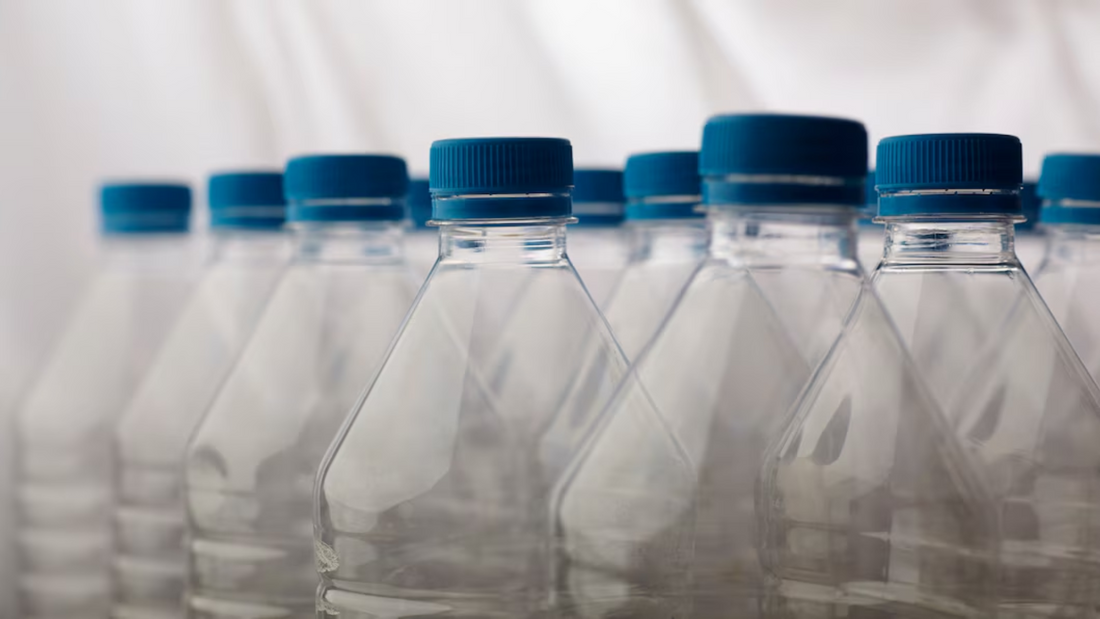In the world of plastic bottles, not all creations are equal. Upon closer inspection, you'll notice a variety of numbers ranging from 1 to 7 imprinted on these containers. But what do these numbers signify? Are all plastic bottles safe to use? And what precautions should we take when using them? This article delves into these essential questions, empowering you to make informed choices.
Meaning of Numbers of Plastic Bottles
Upon careful examination, you'll notice a series of numbers ranging from 1 to 7 emblazoned on the packaging of most plastic bottles. These numbers, situated within the recycling symbol, represent distinct types of plastic bottles and hold unique meanings.
Reasons Why Are Plastic Labelled from 1 to 7
These numbers aren't mere markings; they're known as resin identification codes. These codes serve as valuable indicators of the type of plastic used to manufacture the bottle, facilitating efficient sorting and recycling processes.
What Do the Numbers of Plastic Mean?
Here's a breakdown of the most common codes:
- #1 PET (Polyethylene Terephthalate): This is the most common plastic used for disposable water bottles and food containers. It's generally considered safe and recyclable.
- #2 HDPE (High-Density Polyethylene): Often used for milk jugs, detergent bottles, and some plastic bags. HDPE is typically recyclable.
- #3 PVC (Polyvinyl Chloride): You'll want to avoid PVC for beverages as it can leach harmful chemicals, including BPA. It's also not widely recycled.
- #4 LDPE (Low-Density Polyethylene): Commonly used for grocery bags, bread bags, and some squeezable bottles. Recyclability of LDPE depends on your local program.
- #5 PP (Polypropylene): This is a popular choice for reusable water bottles and food containers. PP is considered safe and often recyclable.
- #6 PS (Polystyrene), commonly known as Styrofoam: Similar to PVC, avoid using PS for beverages due to potential chemical leaching, especially with heat. It's also not easily recycled.
- #7 Other: This category encompasses a wide variety of less common plastics. It's generally best to avoid #7 for beverages due to potential safety concerns and recycling difficulties.

Which Number Plastic Bottles Are Safe to Drinking Water From?
When it comes to water bottles, both disposable and reusable options utilize different types of plastic to prioritize user health and functionality. Let's delve deeper into the specific materials involved.
Disposable Water Bottles: #1 PET (Polyethylene Terephthalate)
What is PET Plastic? Is PET safe for food?
Polyethylene Terephthalate (PET), categorized as #1 plastic. Among the numbers of plastic, this reigns supreme for disposable water bottles. This preference stems from several key advantages:
- Superior chemical resistance: PET boasts a remarkable ability to resist chemical interactions with its contents. This translates to a lower risk of harmful chemicals leaching into your beverage compared to some alternative plastics.
- Designed for single-use: PET bottles are specifically engineered for a single lifespan. While refilling them occasionally might not pose a significant issue, extended reuse or exposure to extreme heat (like leaving them in a hot car) can potentially increase the risk of leaching.
Reusable Water Bottles: #5 PP Plastic (Polypropylene) and #2 HDPE (High-Density Polyethylene)
For reusable water bottles, Polypropylene, known as #5 plastic, and high-density Polyethylene, knonwn as #2 take center stage. Here are why these numbers of plastics are used for reusable water bottles:
#5 PP (Polypropylene):
- Safety: Considered one of the safest plastics for food and beverage contact. It has a high resistance to leaching chemicals, making it suitable for repeated use.
- Durability: PP is a strong and rigid plastic, ideal for withstanding everyday wear and tear of a reusable bottle.
- Heat tolerance: PP has a higher heat tolerance than some other plastics like #1 PET. You can use it with hot beverages without excessive worry about warping or leaching.
- Lighter weight: Compared to #2 HDPE, PP can be slightly lighter, making it a good option for portable water bottles.
#2 HDPE (High-Density Polyethylene):
- Durability: HDPE is known for its excellent strength and sturdiness. It can handle bumps and drops well, making it a long-lasting choice for a reusable bottle.
- Chemical resistance: Like PP, HDPE is resistant to leaching chemicals, ensuring safe use with beverages.
- Cost-effective: HDPE is a relatively inexpensive plastic, making it an affordable option for reusable water bottles.
- Versatility: HDPE can be colored or molded into various shapes, offering design flexibility for reusable bottle manufacturers.
What is HDPE Plastic? Is HDPE Plastic Food Safe
Both two numbers of plastic #2 HDPE and #5 PP are excellent options for reusable water bottles, but some factors might influence your decision:
- Temperature: For those who frequently enjoy hot beverages, #5 PP offers a slight advantage due to its improved heat tolerance. This reduces the risk of warping or leaching at higher temperatures.
- Portability: If carrying your water bottle throughout the day is a concern, #5 PP might be the lighter option. This subtle weight difference can make a significant impact during extended activities.
- Selection: #2 HDPE is a more common plastic, which translates to a wider variety of bottle styles and brands to choose from. You might find a greater selection of colors, designs, and functionalities with HDPE.
Overall, both #5 PP and #2 HDPE are numbers of plastic that are safe and practical choices for reusable water bottles. When choosing water bottle, consider your needs and preferences when making your selection.

What Plastic Bottle Numbers to Avoid?
While many plastic bottles are generally safe, there are a few specific types to be mindful of when it comes to beverage consumption. Here's a breakdown of the numbers of plastic to avoid:
#3 Polyvinyl Chloride (PVC): PVC poses a potential risk of leaching harmful chemicals, including Bisphenol A (BPA). BPA is known to disrupt hormonal activity, raising health concerns, especially when it comes to beverages.
#6 Polystyrene (PS), commonly known as Styrofoam: Similar to PVC, polystyrene can leach chemicals, particularly when exposed to hot beverages. This leaching risk is compounded by the fact that Styrofoam is not easily recycled, leaving a significant environmental footprint.
#7 Other: This category encompasses various fewer common plastics. Due to a lack of widespread information and potential safety concerns, it's generally advisable to avoid using these plastics for beverages. Additionally, their often-complex composition makes them difficult to recycle effectively.
Conclusion
There are variety of plastic bottles types, but not everyone is equal. Understanding the resin identification codes like #1 PET or #2 HDPE empowers you to make informed choices. Opting for safe and durable materials like BPA-free #5 PP or #2 HDPE ensures your reusable bottle delivers both hydration and peace of mind.






2 comments
I’m just trying to find out what bottled water is not safe for my family. We currently are drinking the brand Nice Purified water from Walgreens. There are no codes that match what you have provided.
If some plastic is so bad for us, why do they make them? I just recently became aware of this!